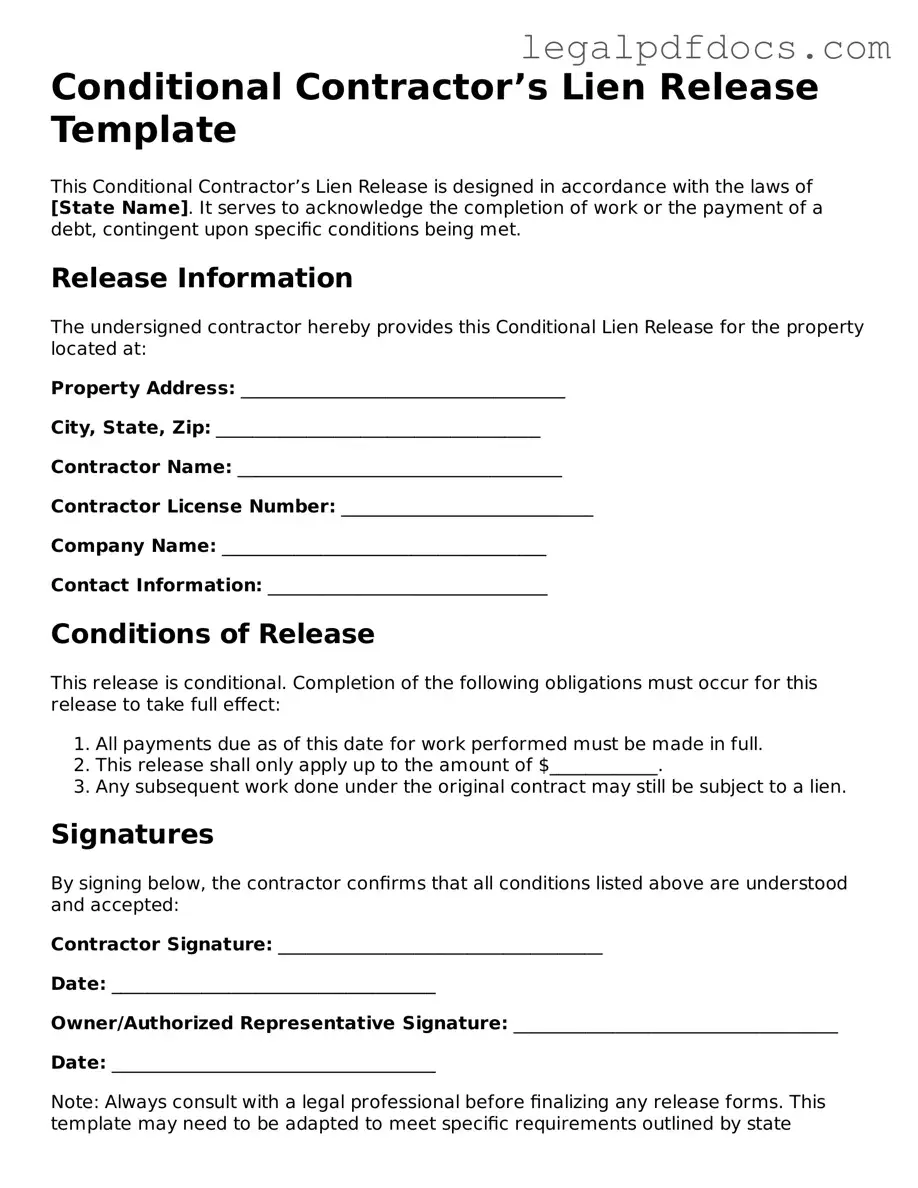The Conditional Contractor’s Lien Release form serves as a crucial document in the construction industry, providing a structured way for contractors to release their lien rights under specific conditions. This form is typically used when a contractor agrees to relinquish their claim against a property, contingent upon receiving payment for work completed. It ensures that once the payment is made, the contractor cannot later assert a lien for the same work, offering protection to property owners and ensuring smoother transactions. The form outlines essential details, such as the parties involved, the property in question, and the amount owed, creating clarity and reducing the risk of disputes. By utilizing this form, contractors can maintain professional relationships while safeguarding their financial interests, and property owners can secure peace of mind knowing that their property is free from potential claims. Understanding the nuances of this form is vital for anyone involved in construction projects, as it plays a significant role in the financial and legal aspects of property development.
